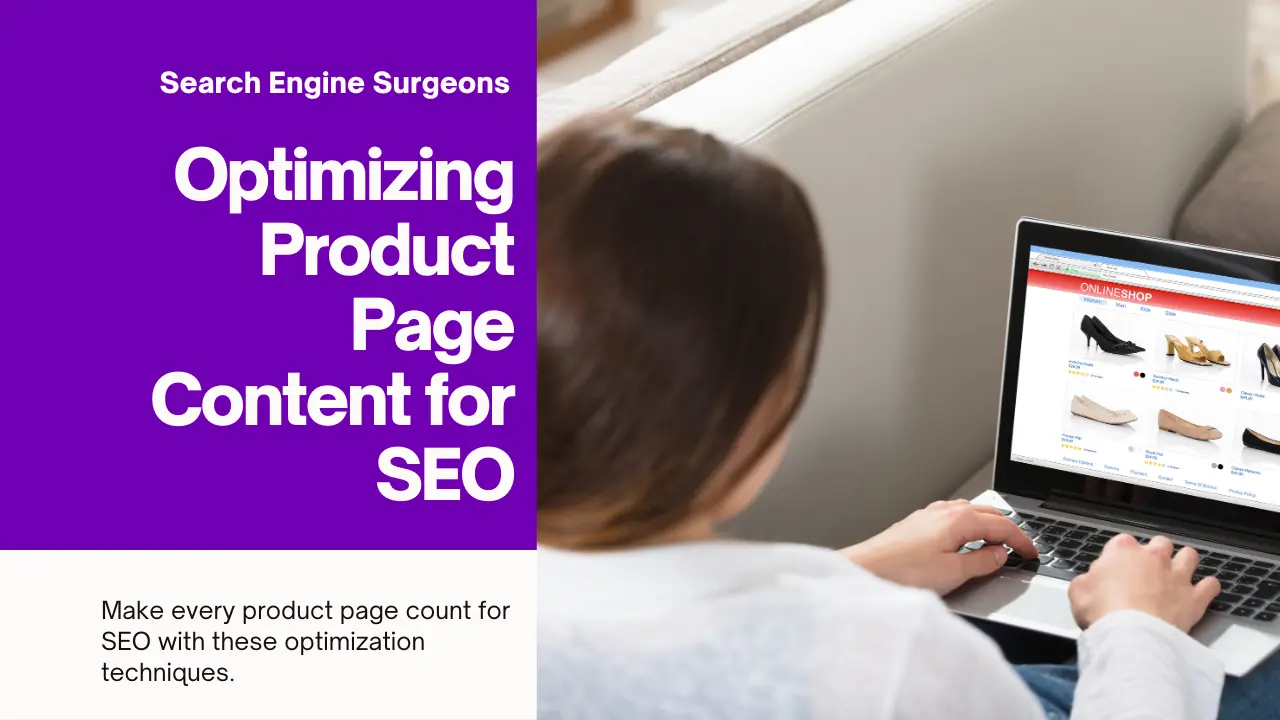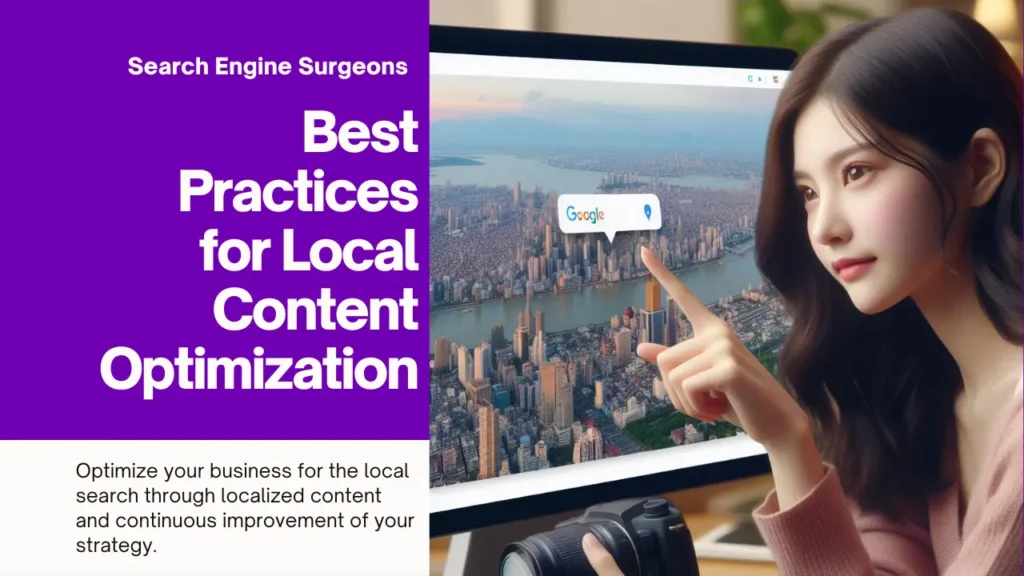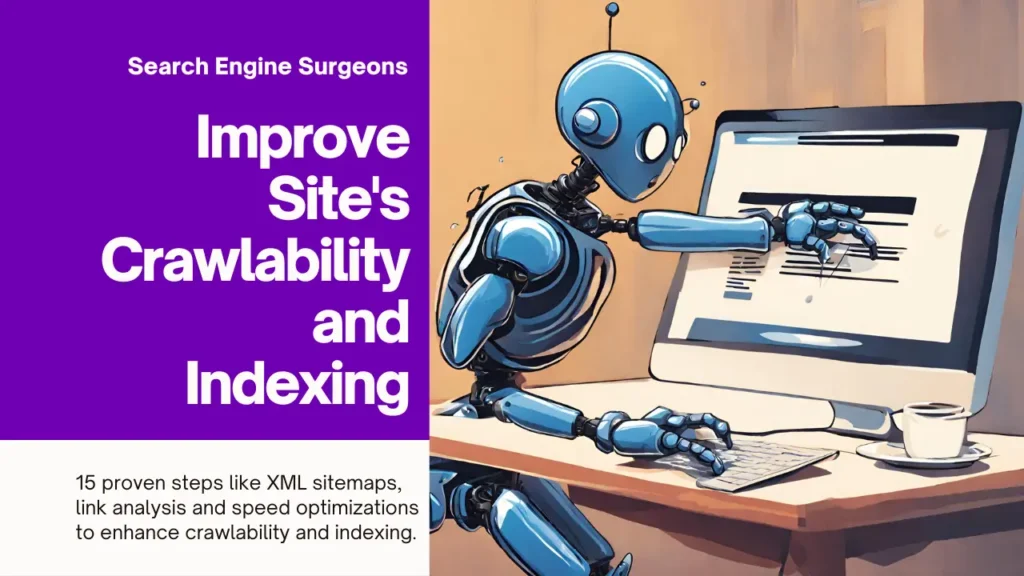We’ve all been there – browsing online for a new gadget, only to get lost in an endless sea of indistinguishable product pages. As a small business owner, standing out from the crowd and capturing customers’ attention is crucial. In this post, I’ll share some tips for optimizing the basic building blocks of your product pages in a way that tells your brand’s story.
Table of Contents
Optimize Content Basics
When it comes to content optimization, the old adage holds true – you never get a second chance to make a first impression. Taking time upfront to structure, format and enhance your content appropriately can have a huge impact on how readers engage with your pages and whether they return in the future. Here are some best practices to optimize your content basics:
Optimize titles, descriptions, URLs
When people are searching or browsing online, clear and compelling titles, descriptions and URLs play a key role in attracting clicks. Take the time to craft titles that accurately summarize what the page is about while also enticing readers to learn more. Descriptions should briefly yet vividly highlight the main benefits and value someone will find if they visit the page. And URLs should be clean, readable words and phrases that match the topic and will also rank well in search engines.
Add high-quality images and alt text
Pictures really do say a thousand words. Including relevant, well-lit images that match the topic can enhance reader understanding and make content more engaging. But it’s important to also add detailed alt text descriptions that convey the essence of each image for visually impaired users or those viewing pages without images loaded. This alt text should be unique and not just a generic restatement of the image file name.
Write unique, engaging descriptions
Rather than simply rehashing what’s already on the page, descriptions are a chance to tease out more insights and value. Tell a brief story about how the content can specifically help the reader. Quote an expert source. Share a surprising statistic. Pose a intriguing question. The goal is to entice visitors to keep reading by addressing the common “What’s in it for me?” concern people have when deciding whether to invest their time on a page.
Focus on user experience
It’s not enough for content to just be factually correct – it also needs to be easy to consume. Use clear subheadings, bulleted lists and white space liberally to segment information into digestible chunks. Employ a friendly, conversational writing style using active voice and second person “you” rather than passive third person. And of course, ensure the content is fully optimized for mobile as that’s how most people access the web these days. A good user experience will keep visitors engaged longer.
Include breadcrumb navigation
Nothing interrupts the user experience more than getting lost. Breadcrumb navigation shows visitors exactly where they are in the site hierarchy at all times. Whether someone landed directly on an interior page or clicked many links deep, breadcrumbs allow for intuitive backtracking. They also enhance scanning ability by revealing the broader topics a page falls under. Including breadcrumbs is an easy way to improve usability and build confidence in visitors as they consume content.
Enhance Content and User Experience
Creating an engaging customer experience should be at the heart of any business. After all, customers don’t just want products – they want solutions to their problems. With that in mind, here are some ideas to enhance your content and better serve users:
Add structured data for products and reviews
Adding structured data through JSON-LD gives search engines more clarity on what a page is about. For ecommerce sites, including details like product names, descriptions, images and reviews in structured data helps sites appear in richer search features like knowledge panels and shopping ads. It also allows review sites to pull and display ratings and customer feedback directly in search results pages. The end result is more clicks from easier discovery and evaluation of products from those initial search impressions.
Include FAQs, questions or call to action
Anticipating common questions or concerns is a great way to engage readers and build trust. By directly answering Frequently Asked Questions, you’re demonstrating your expertise on the topic. Readers will appreciate the proactive customer service approach. You can also insert a relevant question in your writing to pique curiosity or plant ideas. And including a clear call to action near the end, such as a signup form or product purchase button, gives readers a next step for converting interest into action.
Highlight related/recommended products
Giving readers additional options they may like based on what content they’re viewing creates a more personalized experience. We’ve all been in a store and had a helpful employee point out similar items we should consider. On ecommerce sites, related products are a simple way to increase average order value and customer satisfaction. For blogs, recommending further reading helps keep visitors engaged on your site longer. In both cases, it’s important these recommendations are genuinely relevant to build trust.
Feature customer reviews and testimonials
Third party validation from real customers is extremely persuasive. Quotes, reviews and social proof give skeptical readers the confidence to take you up on your offers. Look for ways to highlight your most positively rated reviews or standout testimonials directly within content. You can also consider curating a dedicated reviews or testimonials page or section. Just be sure to select a variety of reviews to maintain credibility. Customer feedback is a powerful way to build social proof of your products or services.
Consider video content or 360 degree views
Visual content engages different parts of the brain compared to plain text. For products where showing is better than telling, video or interactive 360 degree views can really help sell attributes like design, features or functionality. They allow for close virtual inspections impossible through static photos alone. Video tutorials are also excellent for demonstrating processes. And including a short “day in the life” style video can help personalize your brand. Visual content strengthens connections and increases understanding for readers.
Improve Technical Performance
Slow load times, poor responsiveness and broken functionality can lose customers and damage your online reputation. However, taking some key steps to optimize performance can provide big benefits.
Keep page load times fast
Have you ever abandoned loading a page that was taking too long? You’re not alone – studies show 55% of mobile users will abandon a page that takes more than 3 seconds to load. By optimizing images, minifying code, enabling browser caching and other techniques, you can dramatically speed up site performance. Faster speeds mean happier users and better rankings in Google which rewards snappy load times.
Ensure proper technical implementation
It’s one thing to have great content, but if that content isn’t structured correctly with proper HTML, it won’t be indexed or displayed as intended. Be sure to conduct technical audits to identify issues like duplicate page titles, broken links and invalid metadata. Tools like the Google PageSpeed Insights also check for technical SEO best practices like compressing responses and leveraging browser caching. Taking time for implementation quality checks pays off in user experience and discoverability.
Implement responsive design for mobile
With over 50% of search now coming from smartphones, your site needs to look good on any size screen from mobile to desktop. Responsive design adapts the layout and renders correctly no matter the device. Back in 2015, I worked with a client whose site was barely usable on phones. We redesigned for responsiveness which doubled their mobile conversions in just three months. Don’t leave money on the table – ensure your content is optimized for touchscreens too.
Drive Internal and External Links
Building relevant links is one of the most important factors for search engine optimization and visibility. There are many approaches businesses can take to drive useful inbound links both internally and externally.
Link products within category pages
When visitors land on a category page full of products, make it easy for their eyes to scan and click through to other relevant items. Intentionally linking related products helps visitors discover more of your inventory, and it also tells search engines these products are related. Try inserting links with phrases like “You may also like…” or “Customers often buy these together.” It boosts browsing and SEO.
Link to top-level category pages
Nothing signals site structure and importance of topics like internal linking. Be sure any applicable category pages are clearly linked back to their higher-level “parent” categories. This creates an intuitive sitemap for visitors to navigate through your catalog. It also passes authority to help rank those parent category pages that may have fewer direct links compared to their “children.”
Get links from high-authority domains
The best links come from third-party sites Google already deems as experts and influential in your industry. Whether it’s getting covered in a trade publication, guest blogging, or developing valuable resources that others want to share, focus link-building efforts on quality over quantity. One link from Harvard is worth more than 100 from low-quality sites. Quality and relevance to searchers is key.
Consider link building outreach campaigns
While the best links are earned organically, there’s nothing wrong with some polite outbound link requests. Research sites in your space, find the relevant decision-makers on Twitter, and start a respectful discussion. Offer them a valuable asset like your latest eBook in exchange for a mention. Just be sure to focus on quality over spammy tactics that could backfire. Outreach is an art, not a numbers game.
Monitor and Continuously Test
Continuous improvement is so important in any business, but especially for online ventures where your digital presence is always on display. Customers have higher expectations now too – if your site isn’t working for them, they’ll simply go elsewhere. That’s why monitoring performance and testing changes is critical.
Conduct A/B tests and usability tests
Continuous testing and improvement should be part of any business’ DNA. A/B tests help determine the small design tweaks that can make a big difference, like changing a button color or rearranging form fields. Usability tests provide direct feedback from real users on how intuitive your site actually is to navigate. Both are inexpensive … ways to gather actionable insights.
Monitor analytics and key metrics
To know if your optimizations are working, you need benchmarks. Google Analytics can track key metrics like conversion rates, time on site, bounce percentage. Setting … goals and alerts allows you to monitor progress. Tools like Hotjar also provide heatmaps and session recordings to see exactly where visitors are clicking or abandoning. Data is powerful when used to inform the right decisions.
Refine based on user behavior data
Once you understand common pathways and pain points, make targeted adjustments. If a certain page is losing a lot of traffic, maybe it needs better explanation or calls to action. Low … converting sections could use simpler wording or additional examples. By using data to identify issues and then testing solutions, you enter a cycle of continuous enhancement.
Consider seasonal/holiday optimizations
Don’t forget that user needs change throughout the year. During holidays, promote popular gifts. In winter, highlight … warm products. Back to school season is a prime time to promote student supplies. Staying on top of natural buying cycles means you’re there when customers are actively shopping. Test new content or promotions each quarter to maximize performance as demands shift.
Miscellaneous Tips
No SEO guide would be complete without some additional best practices that don’t neatly fit into a single category. Here are a few more tips to keep in mind:
Use human-readable URLs when possible
As a user, I appreciate URLs I can easily understand at a glance rather than random strings of numbers and letters. Search engines also prefer URLs that clearly reflect the topic being discussed. Whenever feasible, structure URLs with descriptive keywords separated by hyphens. It improves both usability and SEO.
Mark discontinued products appropriately
Out of stock or discontinued items can confuse customers if they aren’t labeled properly. Be upfront about product availability so shoppers don’t waste time. I once ordered something only to later find out it was no longer carried – I would have appreciated a clear notice up front. A simple “Discontinued” tag protects the user experience.
Avoid duplicate/near-duplicate content
Content is king, but too much repetition can be a problem. Duplicate pages split your site’s authority between them. And near duplicates may be seen as thin, low-quality material. Consolidate where reasonable and use canonical tags to avoid confusing search engines. It ensures your efforts rank just one page for a topic rather than multiple variations.
Ensure products are findable site-wide
No one likes hunting without success. Make sure your catalog is discoverable throughout the site using internal search, filters, and targeted navigation. Cross-linking related categories helps customers find exactly what they need without friction. A seamless search experience builds confidence in the brand and keeps shoppers loyal.
And in the spirit of keeping tips concise – keep optimizing, keep learning, and keep customers at the heart of every decision! Continuous improvement is the key to long term success.
Conclusion
Optimizing your website is an ongoing process that requires continuous effort, but the payoffs can be significant. By focusing on elements like compelling content, technical performance, user experience and effective linking strategies, you lay the groundwork for increased traffic, higher conversion rates, and better rankings.
As an avid reader myself, I appreciate when companies clearly explain their products and make the shopping experience seamless. It’s also inspiring to see businesses continuously testing new ways to engage customers and improve. Done right, the tips discussed here can help strengthen connections with visitors and fuel meaningful growth.
Of course, every business has different goals. The strategies that work best may vary depending on your niche or target audience. But by monitoring analytics closely and gathering direct feedback, you can refine your approach over time to truly understand what resonates.
Content marketing is a journey, not a destination. I hope the ideas shared have provided some food for thought on how to enhance your website and connect with more potential customers. Keep learning, keep optimizing, and most of all – keep putting your users first in all that you do. Wishing you the very best moving forward!





